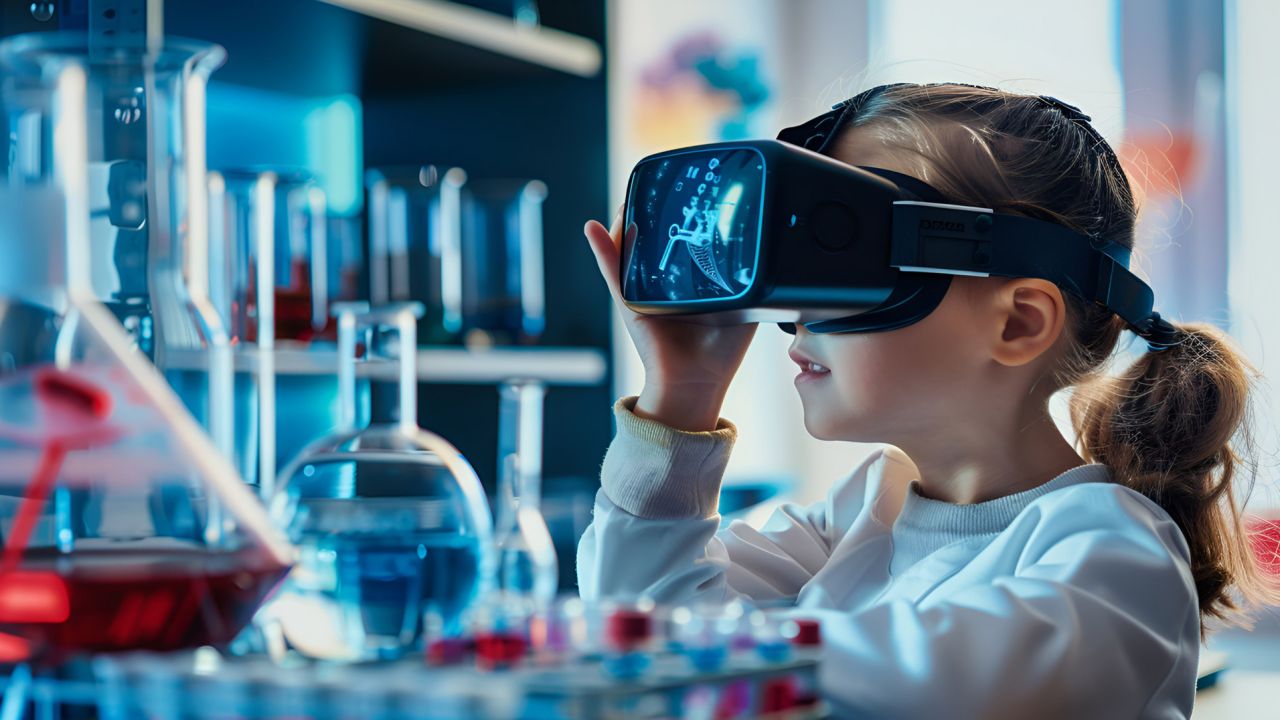Science Simulations VR: Revolutionising Learning Experiences

 Author: Spark Team
Author: Spark Team
Science Simulations VR: Revolutionising Learning Experiences
Introduction to Science Simulations VR
Virtual Reality (VR) is transforming the education sector, particularly in science education. Science Simulations VR involves using immersive virtual environments to replicate scientific experiments and phenomena, providing students with interactive and engaging learning experiences. Spark Emerging Technologies is at the forefront of this innovation, offering advanced VR solutions that revolutionise science education.
Benefits of Science Simulations VR in Education
Science Simulations VR offers numerous benefits, transforming traditional science teaching methods and enhancing student engagement:
Immersive Learning: VR provides realistic, hands-on experiences that make learning more dynamic and enjoyable.
Enhanced Understanding: VR helps improve knowledge retention and understanding by allowing students to experience scientific concepts firsthand.
Increased Engagement: VR captures students' attention and keeps them motivated, fostering a more interactive and participatory learning environment.
Safe Learning Environment: VR allows students to conduct experiments in a risk-free virtual setting, enhancing their confidence and competence.
Accessible Learning: VR can bring complex scientific concepts to life, making them accessible to students of all learning styles and needs.
Real-World Applications of Science Simulations VR
Virtual Labs: VR can create virtual laboratories where students can conduct experiments and explore scientific concepts without the need for physical resources.
Physics Simulations: VR can simulate physical phenomena, such as gravity, electromagnetism, and fluid dynamics, helping students understand complex concepts through interactive visualisation.
Biology Explorations: VR can provide immersive experiences of biological processes, such as cell division, DNA replication, and ecological systems, enhancing comprehension of life sciences.
Chemistry Experiments: VR can simulate chemical reactions and laboratory procedures, allowing students to explore chemistry safely and interactively.
How Spark Emerging Technologies is Leading the Way
At Spark Emerging Technologies, we are committed to advancing science education through innovative VR solutions. Our Science Simulations VR platform offers powerful, interactive features designed by educational experts. We collaborate with leading schools and institutions to ensure our VR solutions meet the highest standards and address the most critical educational needs.
Case Study: Enhancing Physics Education with VR
One of our clients, a prominent high school, implemented our Science Simulations VR to enhance their physics curriculum. The result? A 40% improvement in student performance and a significant increase in engagement and enthusiasm for learning. The school reported that VR technology provided their students with more interactive and hands-on learning experiences, leading to better comprehension of physical concepts.
The Role of VR in Enhancing Science Education
VR plays a crucial role in enhancing science education by providing immersive and interactive experiences that engage students. By simulating scientific experiments and phenomena, VR allows students to explore and learn in ways that traditional methods cannot offer. This immersive approach makes learning more enjoyable and effective.
Integration with AI for Personalised Learning
Integrating AI with VR enhances science simulations by providing personalised learning experiences. AI algorithms can analyse student performance and adapt the VR content to their individual needs, ensuring continuous improvement and mastery of scientific concepts.
Future of Science Simulations VR
The future of Science Simulations VR is promising. As VR technology continues to evolve, we expect even more sophisticated applications that can further enhance science education experiences. At Spark Emerging Technologies, we are dedicated to staying at the cutting edge of this revolution, continually enhancing our VR offerings to meet the evolving needs of the education sector.
Integration with Augmented Reality (AR)
Combining VR with Augmented Reality (AR) creates a comprehensive learning environment that offers the best of both worlds. AR can overlay digital information onto the real world, providing contextual guidance during practical learning sessions, while VR immerses students in fully virtual scenarios. This hybrid approach enhances the versatility and applicability of educational experiences.
Conclusion
Science Simulations VR is transforming the landscape of science education and student engagement. With the innovative solutions from Spark Emerging Technologies, schools and educational institutions can enhance their teaching methods, improve student engagement, and increase learning outcomes. Explore our Science Simulations VR solutions today and join us in revolutionising science education.
Contact Us
Interested in learning more about our Science Simulations VR solutions? Contact Spark Emerging Technologies today to schedule a demo or consultation. Our team is ready to help you enhance science education with cutting-edge VR technology.
© 2025 All Rights Reserved | Company Reg No. 05327622 | Spark Emerging Technologies Limited


